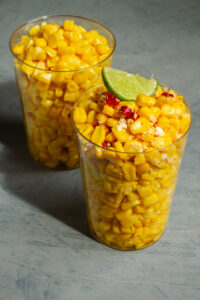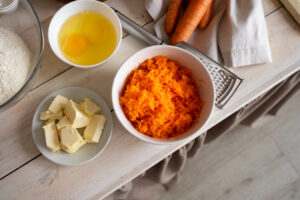Creamy Comfort: The Ultimate Mac and Cheese Recipe
Introduction
Mac and cheese recipe: Welcome to a world where a single bite can transport you back to childhood, where comfort is served in a bowl and nostalgia melts with every forkful. Mac and cheese—short for macaroni and cheese—is more than just a dish; it’s a universal symbol of warmth and satisfaction. Whether enjoyed as a solo indulgence on a rainy day or shared among loved ones at a festive gathering, mac and cheese holds a special place in countless hearts and kitchens worldwide.
Brief History
The origins of mac and cheese trace back centuries, evolving from humble beginnings into a beloved staple. While its exact birthplace is debated, early versions likely emerged in Italy or France before gaining popularity across Europe.After trying the dish while travelling, Thomas Jefferson is credited with introducing a variant to the United States. Mac and cheese has become an international favourite over time, evolving to suit regional tastes and ingredients while maintaining its core appeal.
Section 1: Why Mac and Cheese?
Appeal of Mac and Cheese
What makes mac and cheese such a timeless favorite? At its core, this dish embodies simplicity, versatility, and an unparalleled ability to evoke cherished memories. Its appeal is found in the harmonic union of soft pasta with a smooth cheese sauce, which pleases the taste buds and the spirit.
Mac and cheese transcends age and background, appealing to children craving familiar comfort as well as adults seeking a hearty, satisfying meal. Its simplicity is deceptive, as achieving the perfect balance of creamy texture and cheesy richness requires attention to detail in ingredient selection and cooking technique.
Versatility is another hallmark of mac and cheese. While traditional recipes feature elbow macaroni and a blend of cheddar and mozzarella, variations abound. From adding crispy bacon or caramelized onions to experimenting with gourmet cheeses like Gruyère or fontina, each adaptation offers a unique twist without compromising on the dish’s essential appeal.
Beyond its culinary attributes, mac and cheese holds a special place in our hearts due to its nostalgic value. For many, it conjures memories of family gatherings, cozy dinners, or latenight indulgences during college years. Because of its unmatched capacity to arouse sentiments of cosiness and warmth, it is a preferred option for both regular meals and exceptional events.
In essence, the enduring popularity of mac and cheese lies in its ability to transcend generations, cultures, and culinary trends. It remains a steadfast favorite not just for its taste, but for the emotions and memories it evokes with every creamy, cheesy bite.
Section 2: Ingredients Overview
Key Ingredients
To create a classic mac and cheese recipe, you’ll need a handful of essential ingredients that form the foundation of this beloved dish. While variations abound, sticking to these basics ensures a satisfying result every time.
Pasta: The pasta choice is crucial. Traditional elbow macaroni is popular for its ability to hold onto creamy cheese sauce, but feel free to experiment with other shapes like cavatappi, penne, or shells for added texture.
Cheese: A blend of cheeses is key to achieving that perfect balance of flavor and creaminess. Cheddar is a classic choice, prized for its sharpness, while mozzarella adds a gooey, stretchy texture. Gruyère or Parmesan can lend depth and complexity, depending on your preference.
Milk or Cream: To achieve a luscious sauce, milk or cream forms the base. Whole milk provides richness, while heavy cream enhances the sauce’s silkiness. Adjust quantities based on desired consistency.
Butter: A small amount of butter gives the sauce body and richness. To reduce the overall salinity of the dish, use unsalted butter.
Flour: This thickening agent, which gives the sauce its creamy texture, is frequently made with flour. It’s crucial to guarantee that the pasta is uniformly coated with sauce.
Seasonings: Salt and pepper are fundamental for seasoning the sauce. Additional seasonings like mustard powder, paprika, or garlic powder can elevate the flavor profile.
Optional Variations
While the core ingredients form the backbone of a classic mac and cheese, there’s ample room for creativity:
Cheese Variations: Experiment with different cheeses like fontina, smoked Gouda, or blue cheese for unique flavor twists.
AddIns: Enhance your dish with mixins such as crispy bacon, caramelized onions, diced tomatoes, or fresh herbs like chives or parsley.
Alternative Pasta: Substitute traditional pasta with whole wheat or glutenfree options to suit dietary preferences.
You can adapt your mac and cheese recipe to any meal or palette by perfecting the art of ingredient selection, all while keeping the cosy essence of the dish.
Section 3: StepbyStep Recipe
Recipe Introduction
This mac and cheese recipe is the epitome of creamy comfort, perfect for satisfying cravings and creating lasting memories. Its flavorful combination of cheeses and the smooth sauce that covers each piece of soft pasta are what make it unique. This recipe is guaranteed to provide the best mac and cheese experience, regardless of your level of culinary expertise.
Step by Step Instructions
Step 1: Prepare the Pasta
Bring a large pot of salted water to a boil. As directed on the package, add the macaroni pasta (elbow, cavatappi, or any other shape you choose) and cook until al dente. After it’s all emptied, take it out.
Step 2: Make the Cheese Sauce
Once melted, add flour and whisk continuously, scraping down the sides, for one to two minutes to produce a roux.
Gradually pour in milk or cream, whisking constantly until the mixture thickens and bubbles. Reduce heat to low.
Grated cheddar cheese and mozzarella (or other preferred cheeses) should be added and stirred until smooth and melted. To taste, add paprika or mustard powder in addition to the salt and pepper.
Step 3: Combine Pasta and Sauce
Cooked pasta should be added to the cheese sauce and gently stirred to cover each strand. To get the right consistency, thin up any excess sauce by adding a small amount of milk.
Step 4: Serve and Enjoy
Transfer the creamy mac and cheese to a serving dish. Garnish with freshly chopped parsley or breadcrumbs for added texture and flavor, if desired.
Tips for Success:
Cheese Selection: Select a blend of cheeses that have a good melting point and enhance each other’s tastes. Avoid using preshredded cheese, as it may contain anticaking agents that affect the sauce’s texture.
Cooking Pasta: To prevent it from becoming mushy when combined with the sauce, cook the pasta just long enough to make it firm to the bite.
Sauce Consistency: Vary the sauce’s thickness by adjusting the quantity of flour and milk/cream added. The sauce should coat the back of a spoon without being too runny or too thick.
This step by step guide ensures your mac and cheese recipe turns out perfectly creamy and flavorful every time, ready to delight friends and family alike.
Section 4: Tips for Perfect Mac and Cheese
Cooking Tips
It takes careful attention to detail and a few professional pointers to turn your mac and cheese recipe from excellent to outstanding.
1. Cheese Selection: Opt for a combination of cheeses that melt smoothly and complement each other’s flavors. Good choices include sharp cheddar for tanginess, mozzarella for stretchiness, and a hint of Parmesan for depth.
2. Roux Technique: When making the roux (butter and flour mixture), ensure it’s cooked gently over medium heat to avoid a raw flour taste. Whisk continuously until it turns golden brown before adding the milk or cream.
3. Consistency of Sauce: Gradually add the milk or cream to the roux while whisking constantly to prevent lumps. Simmer the sauce until it becomes thick enough to coat a spoon when cooked on low heat. If necessary, adjust consistency by adding extra milk.
4. Seasoning: Taste and season the cheese sauce with salt, pepper, and any desired seasonings like mustard powder or paprika. Remember, cheeses vary in saltiness, so adjust seasoning accordingly.
Ingredient Substitutions
For dietary preferences or ingredient availability, consider these substitutions for your mac and cheese:
Cheese: Experiment with different cheeses such as Gruyère, fontina, or smoked Gouda for unique flavors. Vegan options like nutritional yeast or dairyfree cheese can also work well.
Pasta: Use whole wheat or glutenfree pasta to accommodate dietary restrictions. These options offer a nuttier flavor or cater to gluten intolerance without compromising on texture.
Milk or Cream: For a lactosefree or vegan option, use almond, oat, or coconut milk in place of dairy milk. A richer sauce can be achieved by using coconut cream.
By tailoring the ingredients to suit your preferences or dietary needs, you can still enjoy a delicious mac and cheese recipe that satisfies every craving.
Section 5: Serving Suggestions and Variations
Garnishes and Additions
Enhance your mac and cheese recipe with optional toppings and mixins that elevate its flavor and texture:
Breadcrumbs: Toasted breadcrumbs add a crunchy contrast to the creamy mac and cheese. Simply sauté breadcrumbs in butter until golden brown and sprinkle over the dish before serving.
Bacon: Crispy bacon bits lend a savory, smoky flavor. Cook bacon until crispy, chop into pieces, and scatter over the mac and cheese for added indulgence.
Vegetables: In addition to adding colour, roasted veggies like broccoli, cauliflower, or cherry tomatoes also retain their freshness and nutritional content. Before adding to dinner, toss with olive oil, salt, and pepper, and roast until tender and beginning to caramelise.
Side Dish Ideas
Pair your mac and cheese with complementary sides or salads for a well rounded meal:
Green Salad: To counterbalance the richness of mac and cheese, a simple green salad with mixed greens, cherry tomatoes, cucumber slices, and a light vinaigrette is refreshing.
Garlic Bread: Garlic knots or toasted garlic bread work well as a mop for the rich cheese sauce, adding a pleasing crunch.
Grilled Chicken: Serve alongside grilled chicken breast or thighs for a proteinpacked option that complements the comforting flavors of the mac and cheese.
You may personalize your mac and cheese experience with these serving ideas and variants, making it a satisfying and unforgettable dinner.
Section 6: Mac and Cheese Around the World
Regional Variations
People all around the world have been enthralled with mac and cheese in one way or another, and each culture has added a unique spin to this timeless dish:
Italian Pasta al Forno: Known for its hearty baked pasta dishes, Italy offers a version of mac and cheese called “pasta al forno.” This dish typically includes pasta baked with a combination of cheeses, often ricotta, mozzarella, and Parmesan, along with tomato sauce or béchamel.
French Gratin: In France, mac and cheese takes on a sophisticated twist with “gratin de macaroni.”Macaroni baked in a creamy sauce enhanced with Gruyère or Emmental cheese, covered with breadcrumbs, then baked till bubbling and golden is the dish’s signature gratin.
International Twists
Modern interpretations and fusion recipes have brought exciting global flavors to the traditional mac and cheese recipe:
MexicanInspired: Incorporate spicy chorizo, jalapeños, and cilantro for a TexMex flair. Top with avocado slices or salsa for added freshness.
Asian Fusion: Infuse flavors like soy sauce, ginger, and sesame oil into the cheese sauce. Add cooked shrimp or tofu cubes for a protein boost and finish with a sprinkle of chopped scallions.
Mediterranean Twist: Use feta cheese, olives, sundried tomatoes, and fresh herbs like basil or oregano. Before serving, drizzle with olive oil for a hint of the Mediterranean.
These international variations showcase the versatility of mac and cheese, adapting to local ingredients and culinary traditions while maintaining its comforting essence.
Section 7: Health Considerations
Nutritional Information
While mac and cheese is undeniably comforting, it’s essential to consider its nutritional profile:
A plate of mac and cheese made with regular pasta, cheese, milk, and butter may include a lot of calories, saturated fat, and sodium.
However, it also provides protein, calcium, and essential vitamins from the dairy and pasta.
Healthier Alternatives
Enjoying mac and cheese doesn’t have to compromise your health goals. Here are some tips for creating a lighter version:
Whole Wheat Pasta: Substitute traditional pasta with whole wheat or glutenfree options. These varieties offer more fiber and nutrients while maintaining a similar texture.
Reduced Cheese: Use less cheese or opt for lighter cheese options like reducedfat cheddar or partskim mozzarella. You can maintain a creamy texture in the sauce by adding a tiny bit of lowfat milk or Greek yoghurt.
Vegetable Additions: Incorporate vegetables like spinach, broccoli, or peas into your mac and cheese. These additions increase fiber and nutrient content while adding color and flavor.
Alternative Sauces: Experiment with sauces made from pureed butternut squash or cauliflower for a creamy base with fewer calories and added vegetables.
You can have a healthy version of mac and cheese without compromising comfort or flavour by following these easy instructions.
Section 8: FAQs
Common Questions
Here are answers to some common queries about making mac and cheese:
Q: Can I reheat leftovers of mac and cheese?
A: Definitely! Mac and cheese should be reheated in a dish that is safe to use in the microwave. To keep it from drying out, cover it with a damp paper towel. Cook, stirring in between, at 30 second intervals in the microwave until everything is cooked through.As an alternative, reheat for about 20 minutes, covered with foil, at 350°F (175°C) in a preheated oven.
Q: Can I freeze mac and cheese?
A: Macaroni and cheese does freeze nicely. Let the dish cool fully before putting it in a freezersafe resealable bag or container. It keeps for two to three months in the freezer. To reheat from frozen, thaw overnight in the refrigerator and then follow the reheating instructions mentioned above.
Q: How can I prevent my mac and cheese from becoming dry?
A: Ensure the pasta is cooked just until al dente to prevent it from absorbing too much sauce during baking or reheating. Adding a bit of extra sauce or a splash of milk before reheating can also help maintain creaminess.
Q: Can I make mac and cheese ahead of time?
A: Mac and cheese can be made in advance and kept chilled until baking time.Simply cover the unbaked dish tightly with foil or plastic wrap and refrigerate for up to 24 hours. When ready to serve, bake according to the recipe’s instructions, extending the baking time if necessary to guarantee thorough heating.
Q: How can I make my mac and cheese more flavorful?
A: Experiment with different cheeses, herbs, or spices to enhance the flavor profile. Adding a dash of hot sauce, Dijon mustard, or Worcestershire sauce can also add depth and complexity to the dish.
These answers address common concerns and tips for making and enjoying mac and cheese, ensuring your dish is always delicious and satisfying.
Conclusion
In closing, mac and cheese stands as a timeless testament to comfort and culinary delight. From its humble beginnings to its global interpretations, this dish has captured hearts and palates worldwide. We’ve explored its simplicity, versatility, and ability to evoke nostalgia, making it a staple on tables from family dinners to gourmet kitchens.
Throughout this article, we’ve delved into the essential ingredients that form the backbone of a classic mac and cheese recipe. You may produce a dish that fulfils both hunger and inventiveness whether you’re a novice or an experienced chef because we’ve included advice and variants to suit every palate and dietary requirement.
Remember, the key to a perfect mac and cheese lies in attention to detail—from selecting the right cheeses and pasta shapes to mastering the art of creamy sauce making. Whether you choose to indulge in the traditional comfort of cheddar and elbow macaroni or venture into international twists like Italian pasta al forno or Asianinspired fusion, the possibilities are as limitless as your imagination.
With this knowledge and inspiration at hand, it’s time to put on your apron and start cooking with our best mac and cheese recipe. Gather your ingredients, follow our expert tips, and create a dish that not only fills bellies but also warms hearts. Allow the luscious richness and velvety texture of your handmade mac and cheese to brighten your table and make your loved ones happy.
Ready to savor the magic of mac and cheese? Dive in, and let the flavors speak for themselves. Bon appétit!



